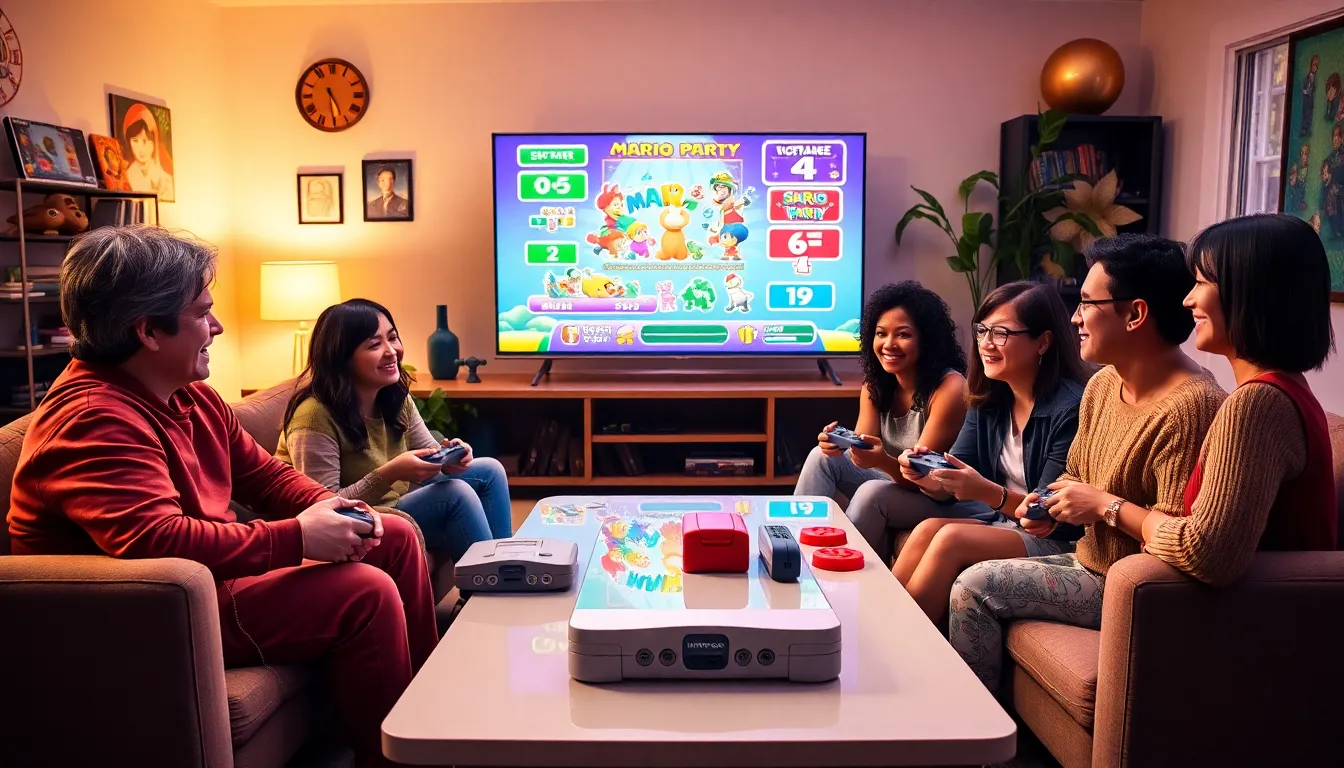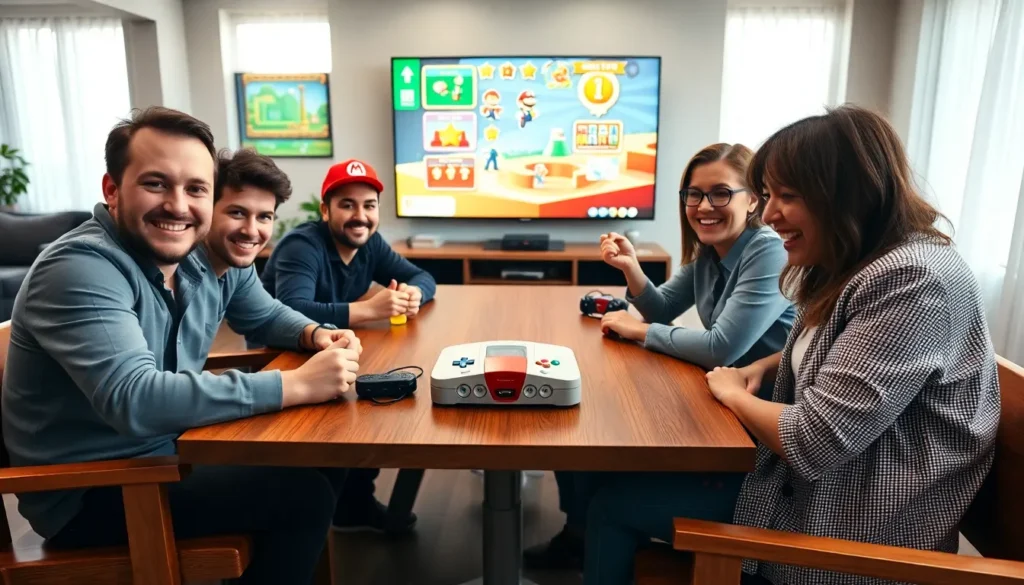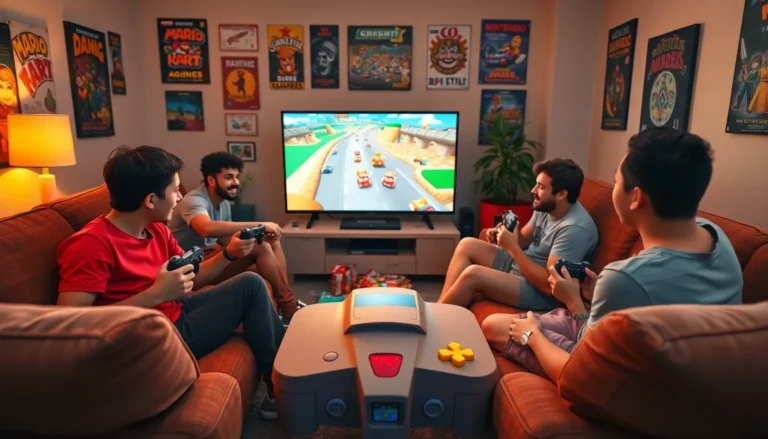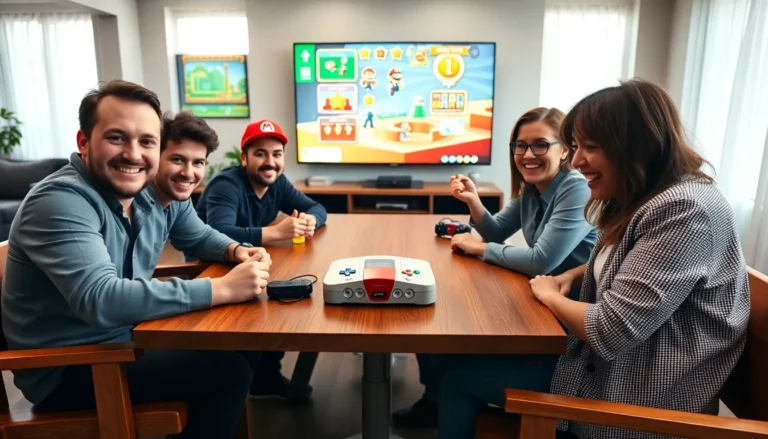Remember the excitement of gathering friends for a night of laughter, rivalry, and maybe a few tears? Enter Mario Party for the Nintendo 64, a game that not only sparked joy but also minor fistfights over a stolen star or two. With its vibrant game boards and chaotic mini-games, it was the soundtrack of many childhood memories. Let’s jump into what makes this beloved title a cornerstone of party gaming, and why it continues to hold a special place in the hearts of players.
Table of Contents
ToggleOverview of Mario Party

Development and Release History
Mario Party first hit the scene in 1998, developed by Hudson Soft and published by Nintendo. The brainchild of a few creative minds, it was conceived as a multiplayer game that combined board game elements with unpredictable mini-games. This blend turned out to be a recipe for success, igniting a new era in the gaming community.
Nearly everyone who owned an N64 remembers this game. The anticipation building up to game night was comparable to waiting for your favorite show to drop a new season. Mario Party became a household name, and not just because Mario was involved – it created a platform for social interaction that appealed to both kids and adults alike.
Gameplay Mechanics and Features
Mini-Games and Their Impact
At the heart of Mario Party are its mini-games. With more than 50 to choose from, players could face off in anything from racing to rhythm challenges. The variety kept the gameplay fresh and unpredictable. Each game only lasted a few minutes, making it easy to play multiple rounds without losing interest. Who could forget the chaos of ‘Blown Away’ or the frantic style of ‘Tug o’ War’? These mini-games didn’t just add fun: they became a significant factor in social dynamics, often leading to laughter and friendly rivalries among players.
Game Boards and Design
The game boards in Mario Party are colorful, imaginative, and filled with surprises. Each board features unique themes, whether it’s the Toad’s Turnpike or Space Land, exploring these worlds was half the thrill. Players navigate through the boards while collecting coins and stars, but it was the strategic element that made it enticing. Each player needed to balance between teaming up against others and plotting their ruthless moves.
Social Experience and Multiplayer Dynamics
Legacy and Cultural Significance
Mario Party undeniably shifted the gaming landscape. The concept of multiplayer party games exploded with this title. It wasn’t just about who could score the most points: it was a test of friendship. Future generations of gamers would reminisce about moments like stealing a star from a friend right when they needed it the most. The camaraderie, and rivalry, created by Mario Party inspired developers to create similar games, cementing its legacy in the industry.
Influence on Future Mario Party Titles
The success of Mario Party propelled multiple sequels and spin-offs, ranging from Mario Party 2 all the way to the latest editions on the Switch. While some titles have attempted to update the formula with new features and mechanics, many die-hard fans believe that the classic N64 version remains unmatched. Developers still reference its innovative gameplay to inspire new titles, proving that sometimes, the old-school way is the best way.
Nostalgia and Community Reception
Fans frequently voice their nostalgia for Mario Party, especially through forums and social media. Videos of gameplay often resurface, reminding players of the glee mixed with sheer sabotage that came with every session. Community events like speedruns and tournaments keep the spirit alive, allowing both veterans and newcomers to share the joy of Mario Party. For many, this game marks not just childhood memories but also values of camaraderie and friendly competitiveness that carry into adulthood.



